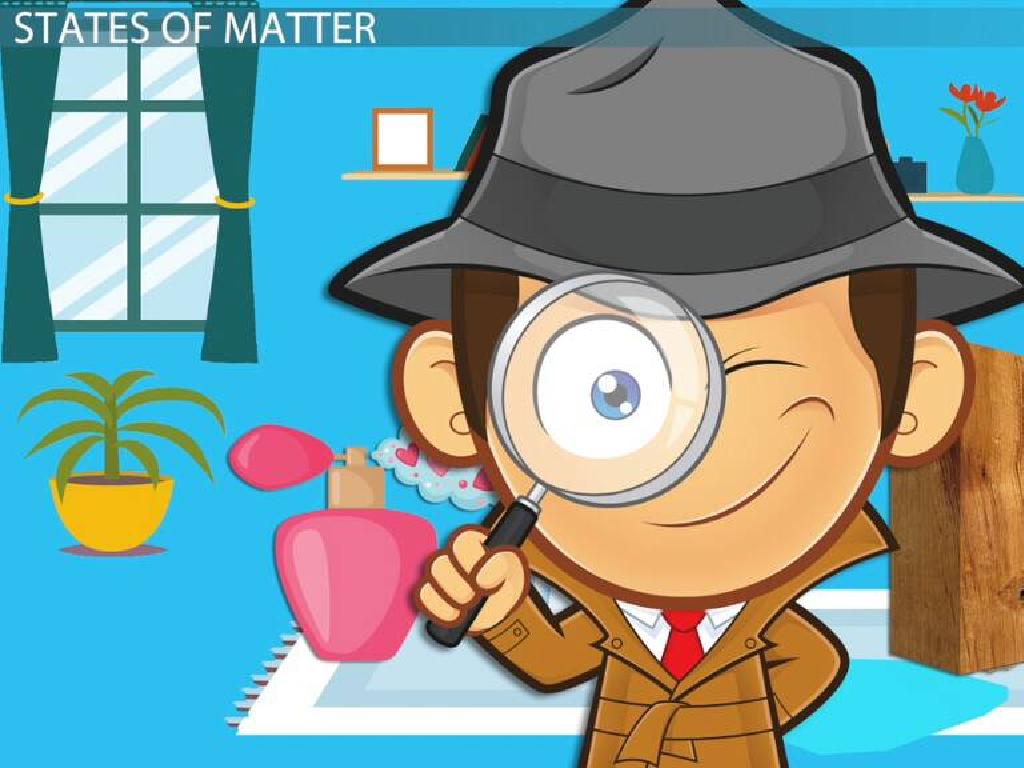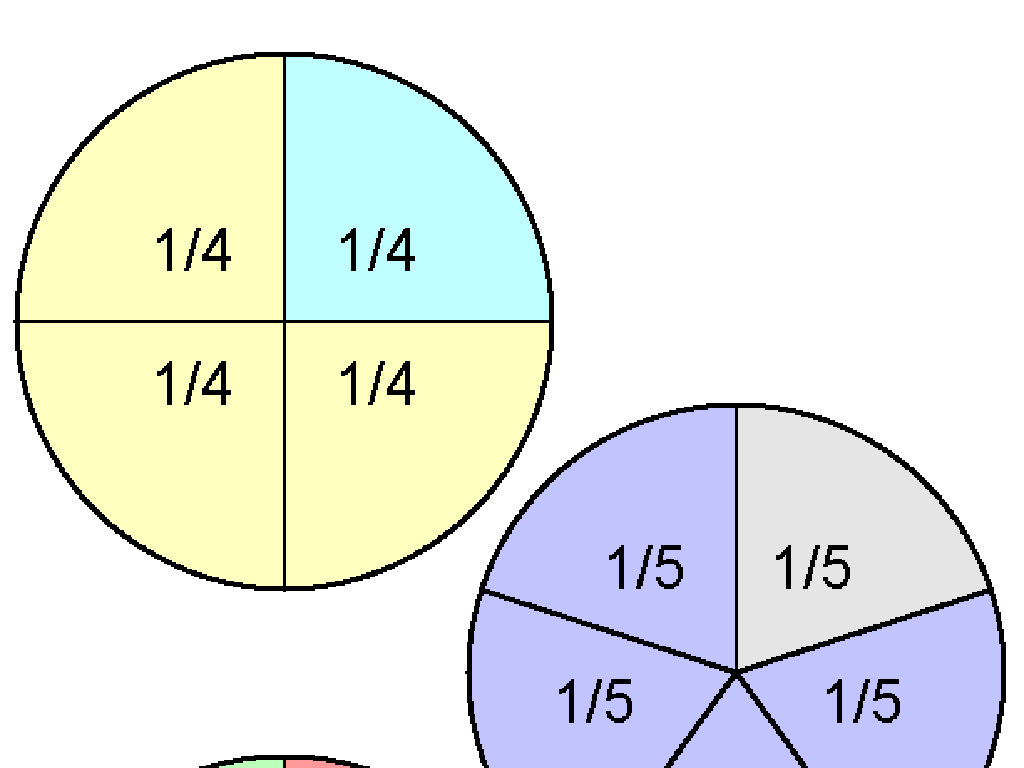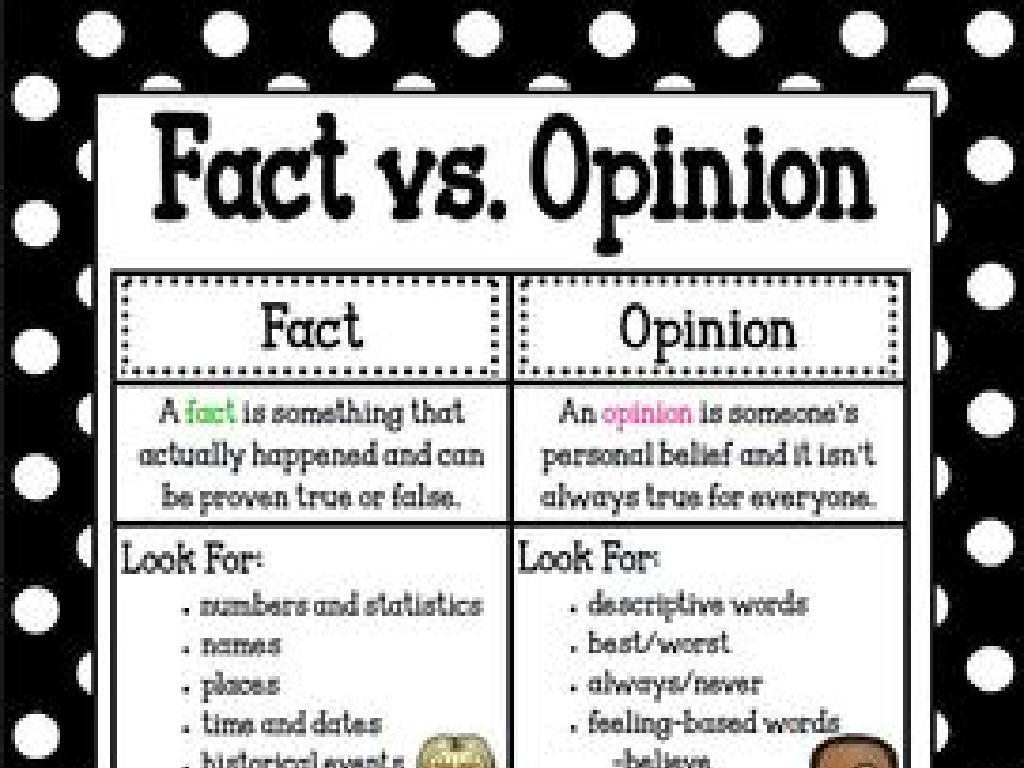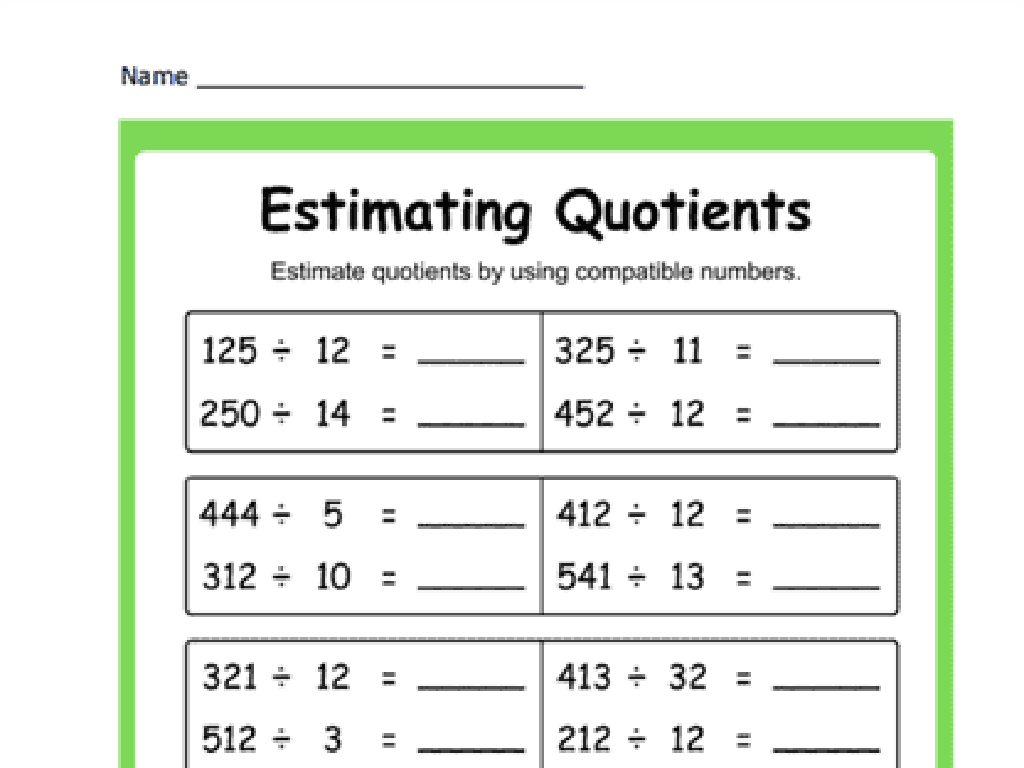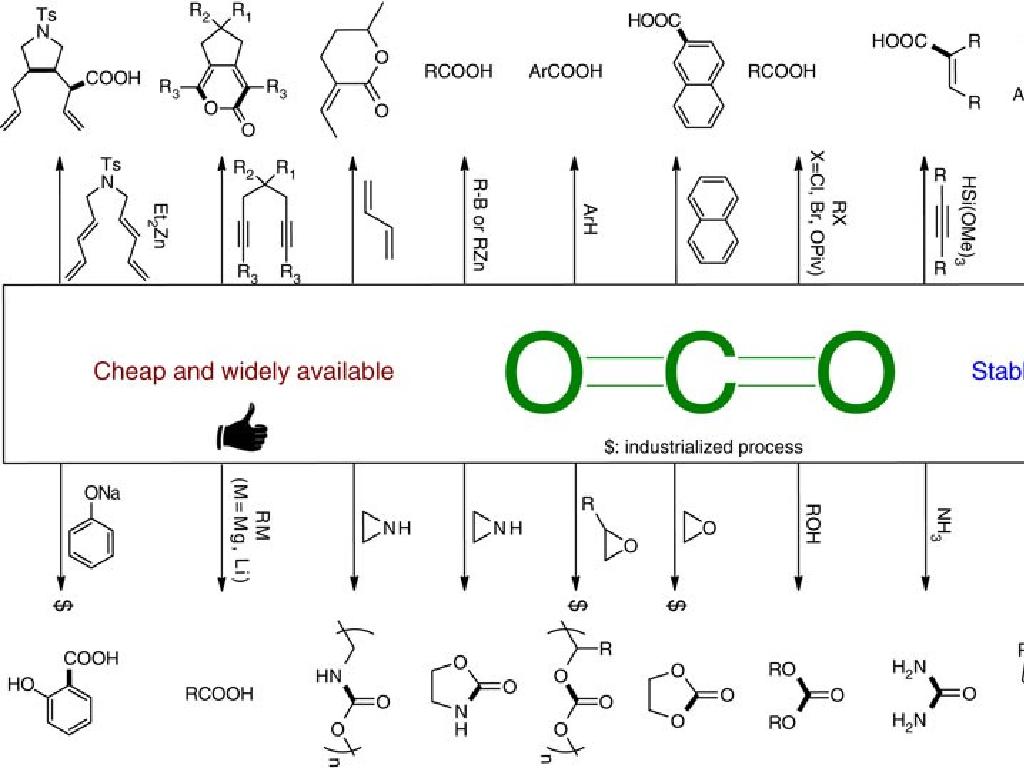Compare And Contrast In Informational Texts
Subject: Language arts
Grade: Fourth grade
Topic: Text Structure
Please LOG IN to download the presentation. Access is available to registered users only.
View More Content
Understanding Compare and Contrast
– What is Compare and Contrast?
– Identifying similarities and differences between two subjects
– Authors’ organization of information
– How authors structure texts to guide readers
– Significance of comparison
– Helps to see connections between ideas or topics
– Significance of contrasting
– Highlights differences to understand distinct characteristics
|
This slide introduces the concept of comparing and contrasting within informational texts, a key component of text structure. Students will learn that authors use this method to organize information, making it easier for readers to understand and retain content. Comparing helps students see how ideas or topics are alike, which can deepen their understanding of the subject matter. Contrasting, on the other hand, emphasizes the differences, allowing students to distinguish between separate ideas or themes. Understanding these concepts is crucial for developing critical thinking and analytical skills in reading comprehension. Encourage students to think of examples from their own experiences where they have compared and contrasted things, such as choosing between two snacks based on their attributes.
Understanding Compare and Contrast
– What does ‘compare’ mean?
– To compare is to find how things are alike
– What does ‘contrast’ mean?
– To contrast is to find how they are different
– Using Venn Diagrams
– A tool with two overlapping circles to organize similarities and differences
– Practice with a text example
|
This slide introduces the concept of comparing and contrasting in informational texts. Start by explaining that ‘to compare’ means to look for ways in which things are similar, while ‘to contrast’ means to find how they are different. Introduce the Venn Diagram as a visual aid to help students organize their thoughts and see the relationships between different elements more clearly. Provide an example of a simple text and work through it with the class, filling out a Venn Diagram together. Encourage students to think of their own examples and to use this tool when reading to enhance comprehension.
Signal Words in Comparing and Contrasting
– ‘Similar’, ‘alike’, ‘both’ indicate comparisons
– ‘However’, ‘on the other hand’, ‘unlike’ show contrast
– Practice finding signal words
– Look for these words in sentences to see how they compare or contrast ideas.
– Understand their role in sentences
– Signal words help us figure out if the text is showing similarities or differences.
|
This slide introduces students to the concept of signal words, which are crucial for understanding how to compare and contrast information in texts. Start by explaining that signal words are like road signs that guide the reader to see if things are the same or different. Provide examples of sentences using these words to demonstrate how they indicate comparison or contrast. For the practice activity, have students identify signal words in sample sentences and discuss what clues these words give about the relationship between the ideas presented. Encourage students to share their findings and explain how the signal words change the meaning of the sentences.
Comparing Animals in Texts
– Read passages about two animals
– We’ll read about different animals and see what they share and what’s unique.
– Find similarities and differences
– What traits do they have in common? How are they different?
– Discuss the author’s purpose
– Why would an author choose to show us these comparisons?
– Understand compare and contrast
|
This slide is aimed at helping students practice the skill of comparing and contrasting within informational texts. By reading two short passages about different animals, students will work together to identify both the similarities and differences presented. Encourage them to think critically about the traits and facts shared in the texts. After identifying these points, lead a discussion on why an author might choose to compare and contrast these details, such as to inform, persuade, or entertain the reader. This exercise will enhance their understanding of text structure and the purpose behind the author’s choice of content.
Your Turn to Compare and Contrast!
– Observe an apple and an orange
– List similarities and differences
– Think about color, shape, taste, texture, etc.
– Discuss findings with a partner
– Take turns and listen to each other’s observations
– Reflect on the comparison process
– How does comparing and contrasting help us understand things better?
|
This activity is designed to engage students in the practice of comparing and contrasting using familiar items – an apple and an orange. Encourage them to use their senses and descriptive language to note similarities and differences. They should consider aspects such as color, shape, taste, and texture. After writing their observations, students will pair up to discuss their findings, which promotes collaborative learning and communication skills. As a reflection, guide them to understand how comparing and contrasting can provide a deeper understanding of the subjects in question. Provide additional examples if time allows and encourage students to apply these skills when reading informational texts.
Class Activity: Compare and Contrast
– Pick two topics from the board
– Write a compare and contrast paragraph
– Discuss similarities and differences between the two topics
– Include signal words in your writing
– Words like ‘similarly’, ‘however’, ‘but’, ‘both’, and ‘unlike’
– Get ready to present your paragraph
|
This activity is designed to help students understand how to compare and contrast two different topics using informational text structure. Start by explaining what comparing and contrasting means and provide examples of signal words that can help structure their paragraphs. Encourage creativity and critical thinking as they choose their topics and write their paragraphs. Provide guidance on how to organize their thoughts, perhaps by using a Venn diagram. Once they have written their paragraphs, have each student present their work to the class, which will help build their public speaking skills and allow for peer learning. Possible topics could include comparing two animals, historical figures, or favorite books.
Review: Why Compare and Contrast?
– Authors compare to show similarities
– They contrast to highlight differences
– Clues: words like ‘both’, ‘similarly’, ‘however’
– Look for signal words that show comparison (like ‘similar to’) or contrast (such as ‘on the other hand’)
– Homework: Find compare & contrast example
– Choose any book or article and write down a passage where you see comparison or contrast
|
As we wrap up, remember that authors use comparison to draw parallels and show how things are alike, while they use contrast to emphasize how they are different. Identifying these structures helps us understand the text better. For homework, students should find real-world examples of compare and contrast to reinforce their learning. Encourage them to look for specific signal words that indicate whether the author is comparing or contrasting subjects. This exercise will help solidify their understanding of the text structure and improve their analytical reading skills.

